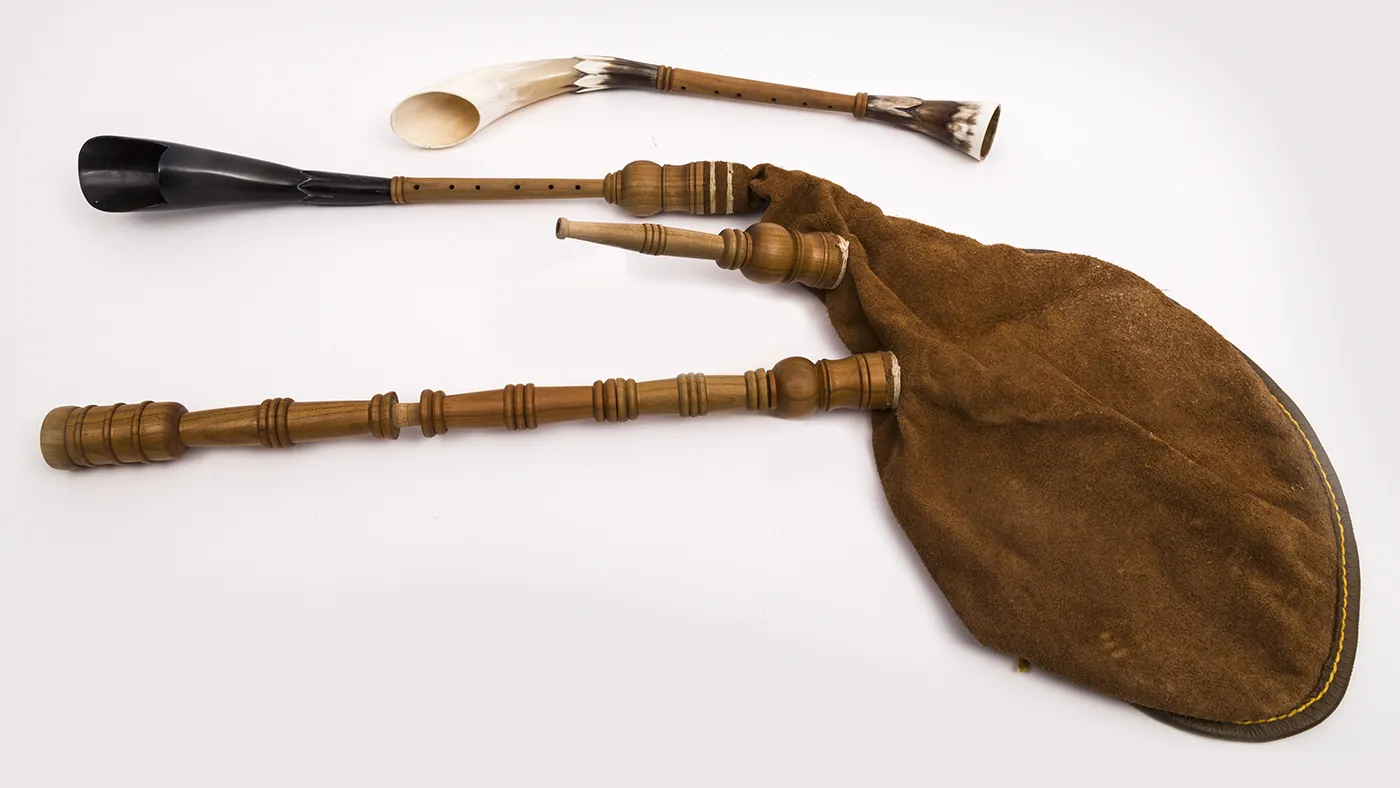Welsh Instruments
A renewed life for Welsh instruments and tunes
Wales is a dynamic and resilient nation located to the southwest of England. Its history is filled with upheavals, and its ancient traditions have often been interrupted—not least the creation and use of Welsh instruments and tunes. The fact that these traditions survive and the genre is thriving is a testament to a long process of adaptation, reimagining, and reclamation highlighted in the Wales Smithsonian Cymru program.
Religious reforms in eighteenth-century Wales sought to discourage the use of traditional Welsh instruments, including the harp and fiddle. At the same time, church hymns sustained choral music and Gypsy musicians kept some of the traditional tunes in circulation. Today older tunes and traditional instruments are played proudly and in innovative ways by the musicians who have been shaping a future out of the past.
The instruments shown here are two that have made a strong comeback: the hornpipe (pibcorn) and bagpipes (piban cŵd). Their history has been traced back to the fourteenth century, but contemporary musicians had to rediscover how to make and play them. Museum collections have helped fill in the gaps: the Welsh National Museum at St. Fagan’s carefully analyzed historic examples for correct measurements and hints at techniques in their creation.
For the 2009 program, our music advisors recommended John Glenydd Evans to represent instrument making. His instruments are considered some of the best made in Wales. His path to this skill was circuitous but perhaps ordained: he left school at fifteen and apprenticed as a carpenter. A serious accident in 1993 led him to reevaluate his life, and he decided to combine two of his loves in his work: traditional Welsh music and turning wood. The result is a catalog of in-demand instruments for the country’s finest musicians.


